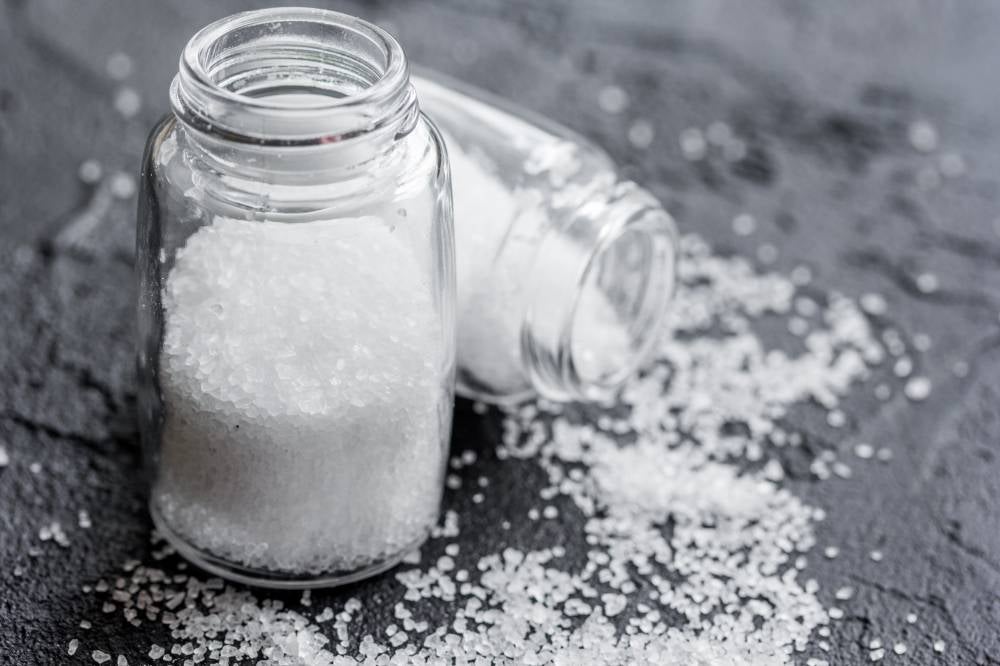Mineral-rich or not, all salts 'almost the same' - Experts

KUALA LUMPUR - Himalayan salt, Celtic sea salt, spring salt - are they really healthier alternatives to regular table salt?
On TikTok recently, the "virtues" of consuming Celtic sea salt became a trending topic after a foreign health influencer claimed that adding a pinch of Celtic sea salt under the tongue before drinking water can boost hydration, sparking a debate among netizens about the merits of consuming the pricier salt.
When asked to verify the perceived health benefits of certain types of salt, health experts and nutritionists Bernama spoke to said all salts are "almost the same” and primarily composed of sodium chloride, which is essential for bodily functions like maintaining fluid balance and muscle function.
But sodium chloride is also responsible for health concerns related to excessive salt consumption, such as high blood pressure.
The experts, however, agreed some types of salt may contain a higher mineral content than others, depending on the degree of processing they undergo.
CELTIC SEA SALT THE BEST?
Universiti Putra Malaysia (UPM) Faculty of Medicine and Health Sciences lecturer Dr Zulfitri Azuan Mat Daud said from a health perspective, all types of salt primarily contain sodium chloride which is responsible for the salty taste.
"The only difference is, these salts may have varying amounts of trace minerals or different levels of impurities which can give them distinct flavours, colours and textures," he said.
He added determining the "best" salt would be very subjective as it would depend on individual preferences, dietary needs or culinary applications.
Prof Dr Norhaizan Mohd Esa, a lecturer at the Department of Nutrition, Faculty of Medicine and Health Sciences, UPM, said whether people are using the so-called healthier Celtic sea salt, Himalayan salt, spring salt, mountain salt, bamboo salt or kosher salt, the reality is that the sodium content is almost the same in all types of salt.
"However, some of them do have an advantage over table salt. Celtic sea salt, Himalayan salt and spring salt also contain minerals including calcium, copper, zinc, iron and potassium, apart from sodium chloride,
"Due to their high mineral content, these salts may help maintain body fluid levels, nerve work and muscle movements,” she added.
TYPES OF SALT
Commenting on the Celtic sea salt fad, nutritionist Reshmy Ranee said it became popular after a health guru claimed on TikTok that "placing crystals of Celtic sea salt under the tongue before drinking water will draw the water directly into the cells, hydrating the body properly instead of the salt just passing straight through”.
Dismissing the claim as "just (a) marketing (tactic) by people who want to cash in on this salt”, she said: "Our cells will still absorb water with or without the addition of salt as 70 per cent of our body consists of water.”
She said salt intake with water is, however, advisable for those who lose a lot of electrolytes through, for example, running marathons.
Concerning the various types of salts and their origins, Celtic sea salt is a natural sea salt sourced from seawater in the estuaries near Guérande, France, and other coasts as well, while Himalayan salt is mostly from the Khewra salt mine in Pakistan’s northern Punjab region.
Spring salts are formed when natural spring water from an underground aquifer flows through rock salt. This salty spring water then flows above the ground where it evaporates naturally and the remaining crystals are harvested by hand.
Table salt, meanwhile, comes from salt mines and is processed to eliminate impurities and minerals as well, leaving only sodium chloride which is enriched with iodine. Common salt also often has additives such as anti-caking agents.
As for their retail prices, table salt is priced between RM0.90 and RM1.34 per kilogramme while French Celtic Sea Salt (250g) costs RM7.13. Himalaya Mineral Rock Salt (250g) is priced at RM3.89 and Sierra Nevada Spring Water Salt (250g) at around RM11.85.
Commenting on the higher prices of the "healthier” alternatives, Dr Zulfitri Azuan said it could be due to their more elaborate production processes as well as the fact that some of these salts are harvested by hand using traditional methods.
Their branding and marketing efforts as well as their perceived health benefits may also contribute to the higher prices, he added.
DAILY SALT INTAKE
Salt must be consumed in moderation whether or not they contain a host of minerals. The World Health Organization’s recommended daily salt consumption is five grammes, equivalent to one teaspoon. This amount includes visible or hidden salt in flavourings, processed foods, preserved foods or snacks.
Based on the 2019 Malaysian Community Salt Survey by the Institute of Public Health at the Ministry of Health, four of five Malaysian adults consumed more salt than the recommended level. The average salt intake of Malaysian adults was 7.9 grammes, equivalent to 1.6 teaspoons a day.
Dr Norhaizan, meanwhile, said during Ramadan, many people choose to eat foods high in salt such as dried fish and salted eggs, especially during sahur (predawn meal), because they help boost the appetite.
"However, high salt consumption accompanied by low water intake will affect the body. Salt increases the feeling of thirst, and the situation also causes the sodium level in the blood to rise (hypernatremia). (When this occurs) the volume of fluid in the blood vessels increases and the pressure in the vessels also becomes high, causing the heart to work harder.
"If the situation persists, the affected individual can experience muscle spasms or seizures and (even go into) coma,” she said. - BERNAMA
tags: sodium, salt, celtic sea salt, himalayan salt, Universiti Putra Malaysia, nutrition, lifestyle














